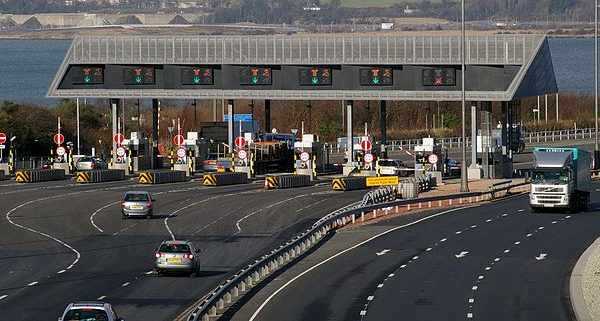The 110 Freeway in Los Angeles and the Capital Beltway encircling Washington, D.C., are two examples of well-known American roadways that need extensive rebuilding or repair. It’s reasonable that roughly a third of the country’s major highways need serious repair or replacement because many were constructed in the middle of the last century. Thirty-four states and Puerto Rico currently use highway tolling as a stable revenue strategy, but federal law prevents them from utilizing toll roads to replace existing interstate highway sections.

U.S. transportation revenue is now derived from the 18.4 cents per gallon gas tax that has stayed steady for 16 years; however, it is insufficient to support all critical transportation projects.
On the other hand, Tolls are preferred by 43 percent of Americans over other taxes, such as a higher sales tax or transportation costs, to raise money for roads and infrastructure.
It is possible to find a way to pay for the country’s transportation needs through tolling. In 35 states and territories, the United States already has 5,431 miles of toll highways.
Federal law precludes states from utilizing tolls to replace existing lanes of interstate roads,” which is one of the main issues when funding infrastructure with toll money.
Below are five myths that make it more difficult for tolling to assist in covering the U.S.’s infrastructure funding need.
The cost of our roads has already been covered:
Although agencies paid for the construction of the infrastructure, it is still insufficient. Highways and bridges necessitate regular repair and replacement (the lifespan of most bridges is about 50 years). Taxes, tolls, and other levies must pay for transportation infrastructure upkeep and replacement.
There are two taxes involved in tolls: one on the driver and one on the vehicle:
Tolls are not a form of taxation but rather a type of service charge. Tolls are a way for motorists to pay for the roads they use. For example, if you use a toll road, you’ll have to pay a gas tax at the pump, which pays for non-toll highways used by everyone-this is double payment.
Tolls exacerbate already-existing traffic problems:
The traditional method of paying a toll was to pull over to a tollbooth, hand over cash, or toss coins into a collection basket. Toll payments necessitated both a halt and wait. Now it’s not. Most toll highways, bridges, and tunnels now collect money from motorists via computerized toll collection systems. You deposit your i90 tolls N.Y. at highway speeds with a transponder linked to your account as your vehicle passes beneath a tolling gantry. Using all-electronic toll collection saves time. Time is money for many toll-road users. In addition to lowering idle and congestion, the electronic tolls help improve local air quality. When you had to stop and wait to pay your toll, it was a barrier to mobility. The main obstacle to mobility is the continuous usage of the gas tax and the inability of governments to use interstate highway fees to upgrade their infrastructure.
Tolling technologies violate the privacy of drivers:
Customers have assessed a toll based on their vehicle’s classification (car, truck, motorcycle, etc.) and the distance they travel on a toll road through electronic toll collection. To ensure correct payment, toll facility operators, like any other business, safeguard their customers’ personal information. As a result of today’s advanced toll facilities, toll road consumers will be assured that their personal details and privacy are protected.
Tolls are prohibitively expensive:
Some AET facilities’ toll collection expenses might range from 5 to 8 percent, comparable to the cost of collecting gasoline taxes. An additional benefit of a fully developed AET system is that toll collection could be less expensive than gas tax collection, according to a Reason Foundation study from 2012.
Non-tolled interstate highway lanes are now prohibited from being tolled by federal law. However, if Congress allowed states to choose tolls when it’s the best option for their communities and constituents, we would gradually improve our roads and bridges.
Conclusion:
In the long term, tolls are a viable option for financing the United States’ future transportation infrastructure. As a result, the transportation system in the U.S. will benefit from a long-term, sustainable funding solution, which will lead to improved and safer commutes for all of us.

